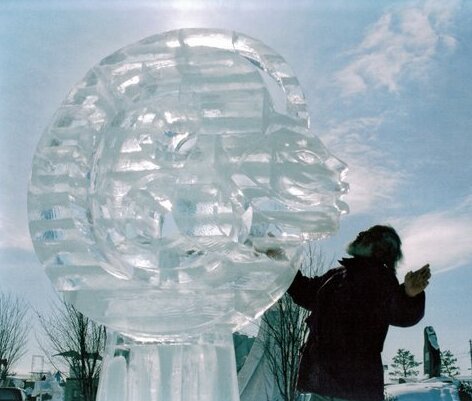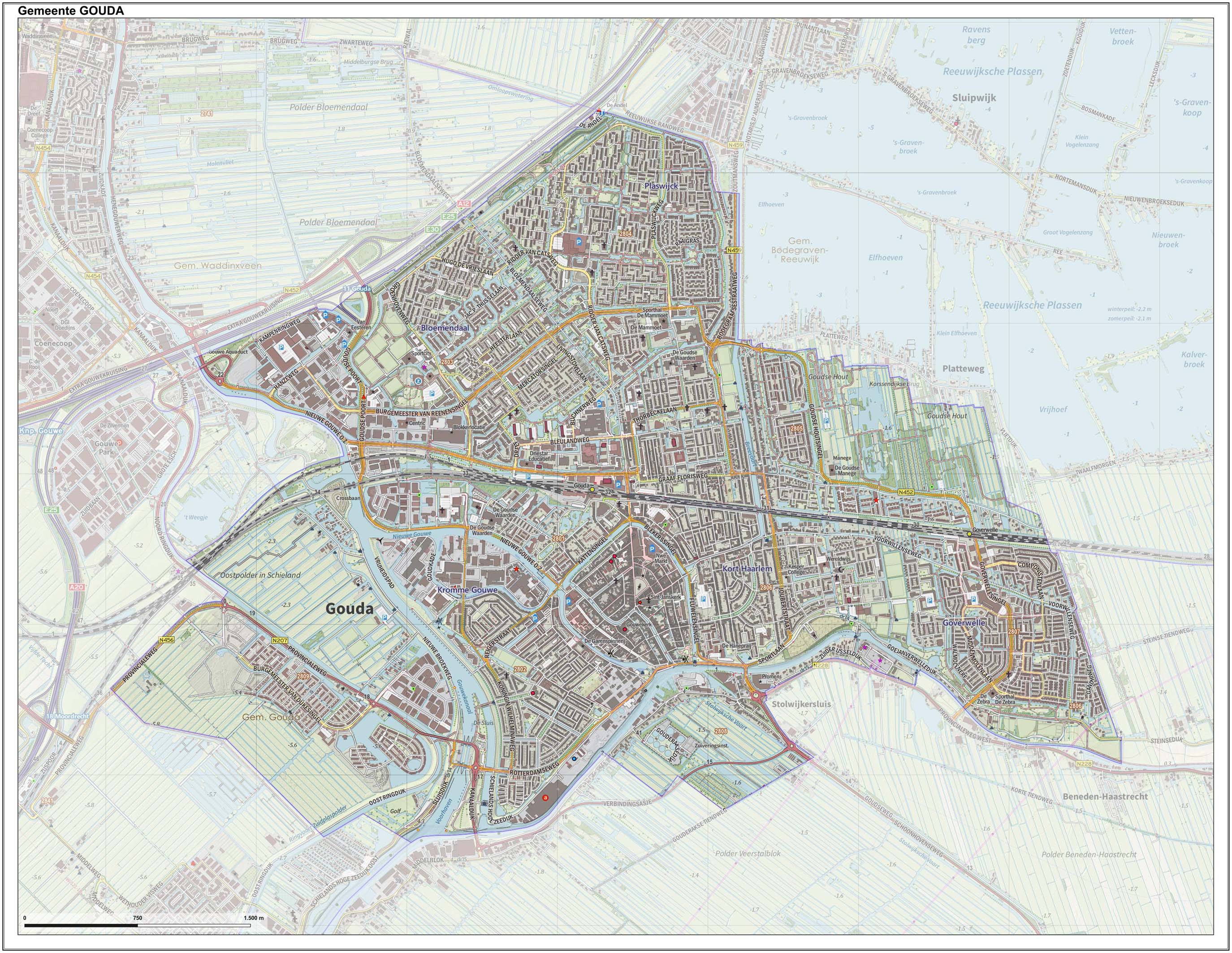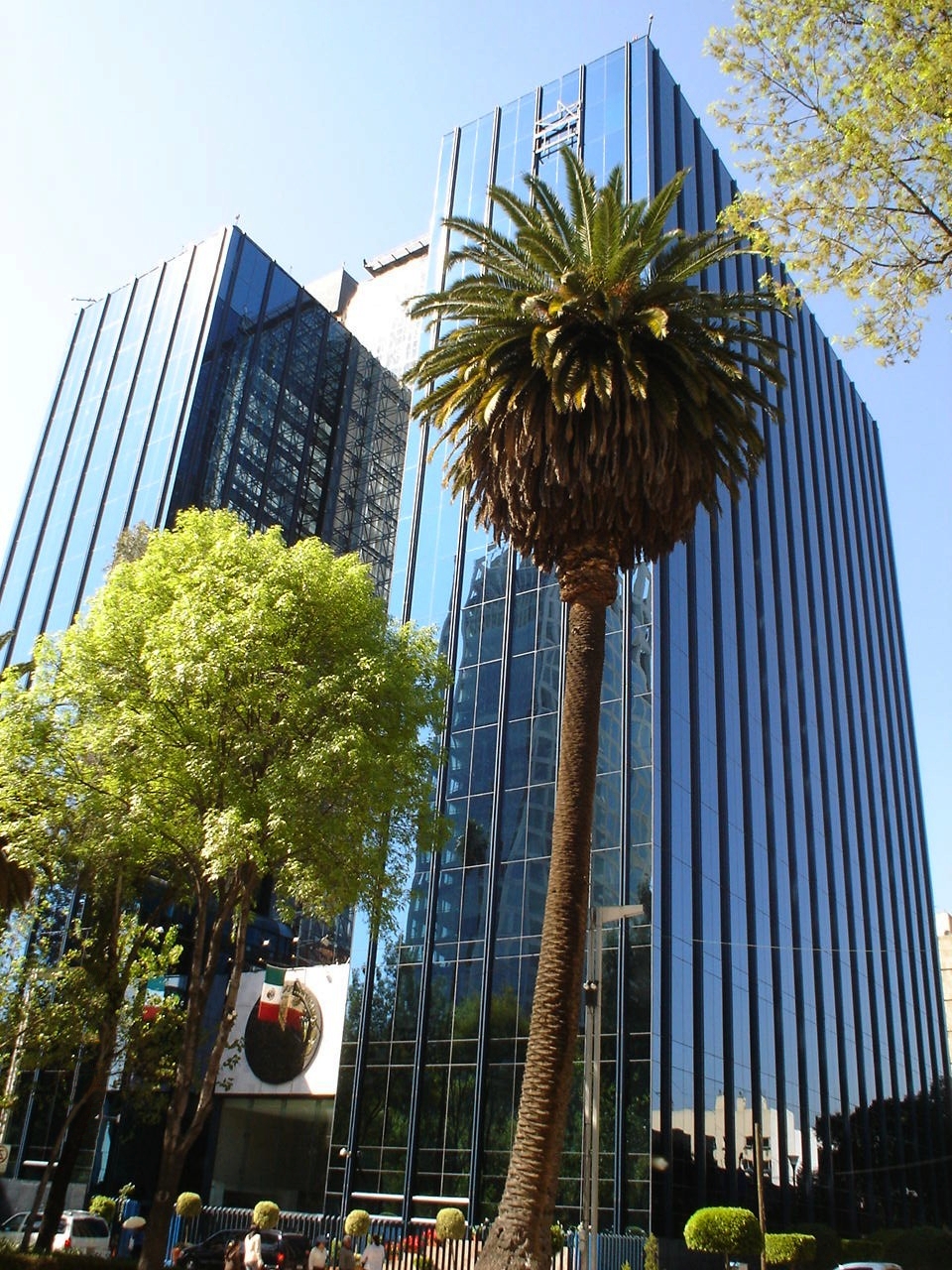|
Abel Ramírez Águilar
Abel Ramírez Águilar (22 May 1943 – 19 July 2021) was a Mexican sculptor who won many prizes not only for traditional pieces in wood, stone and metal, but also for ice and snow sculptures in the United States, Canada, Japan and Europe. He was trained as a sculptor in Mexico and the Netherlands and has exhibited his work individually and collectively since the 1960s. He discovered snow and ice sculpting while visiting Quebec in the 1980s, first experiencing snow in his forties. The challenge intrigued him and he began sculpting this medium as an amateur. He began sculpting ice and snow professionally when he was entered in the competition associated with the 1992 Winter Olympic Games without his knowledge. Having practiced beforehand at an ice factory in Mexico City, he won the gold medal for this event, leading to invitations to other competitions for over twenty years. Ramírez lived in Mexico City. Life Abel Ramírez Aguilar was born in Mexico City on 22 May 1943. His ... [...More Info...] [...Related Items...] OR: [Wikipedia] [Google] [Baidu] |
Mexico City
Mexico City ( es, link=no, Ciudad de México, ; abbr.: CDMX; Nahuatl: ''Altepetl Mexico'') is the capital and largest city of Mexico, and the most populous city in North America. One of the world's alpha cities, it is located in the Valley of Mexico within the high Mexican central plateau, at an altitude of . The city has 16 boroughs or ''demarcaciones territoriales'', which are in turn divided into neighborhoods or ''colonias''. The 2020 population for the city proper was 9,209,944, with a land area of . According to the most recent definition agreed upon by the federal and state governments, the population of Greater Mexico City is 21,804,515, which makes it the sixth-largest metropolitan area in the world, the second-largest urban agglomeration in the Western Hemisphere (behind São Paulo, Brazil), and the largest Spanish-speaking city (city proper) in the world. Greater Mexico City has a GDP of $411 billion in 2011, which makes it one of the most productive urb ... [...More Info...] [...Related Items...] OR: [Wikipedia] [Google] [Baidu] |
Tultepec
Tultepec is a city and municipality located in State of Mexico, Mexico. It lies directly north of Mexico City in the northeastern part of the State of Mexico, making it part of the Greater Mexico City urban area. The name comes from Náhuatl meaning 'hill of the 'tule'. The census of 2005 reported a population of 57,586 for the city and 110,145 for the municipality as a whole. The city The area was first settled by the Chichimecas, followed by the Otomis in the seventh century. After the Spanish Conquest, Tultepec was given to the conquistador Alonso Ávila along with the current municipalities of Zumpango, Xaltocán, Huehuetoca, Coyotepec, Teoloyucan and others, as part of the Encomienda de Cuautitlán. The modern town of Tultepec began to take shape around 1610 in the valley next to a small elevation called San Martín. Franciscans came to evangelize the new community, dedicating it to the Nativity of Holy Mary and constructing a temple in 1618. This temple, later a parish, was ... [...More Info...] [...Related Items...] OR: [Wikipedia] [Google] [Baidu] |
UNAM
The National Autonomous University of Mexico ( es, Universidad Nacional Autónoma de México, UNAM) is a public research university in Mexico. It is consistently ranked as one of the best universities in Latin America, where it's also the biggest in terms of enrollment. A portion of UNAM's main campus in Mexico City, known as '' Ciudad Universitaria'' (University City), is a UNESCO World Heritage site that was designed by some of Mexico's best-known architects of the 20th century and hosted the 1968 Summer Olympic Games. Murals in the main campus were painted by some of the most recognized artists in Mexican history, such as Diego Rivera and David Alfaro Siqueiros. With acceptance rates usually below 10%, and its research, especially in Artificial Intelligence, being recognized by UNESCO as one of the most impactful globally, UNAM is known for its high quality research and educational level. All Mexican Nobel laureates are either alumni or faculty of UNAM. UNAM was founded, i ... [...More Info...] [...Related Items...] OR: [Wikipedia] [Google] [Baidu] |
Instituto Politécnico Nacional
The National Polytechnic Institute of Mexico ( es, Instituto Politécnico Nacional de México; ), abbreviated IPN, is one of the largest public universities in Mexico with 171,581 students at the high school, undergraduate and postgraduate levels. It is the second-best university in Mexico in the technical and engineering domain according to the QS World University Rankings by Subject 2018. It was founded on 1 January 1936 during the administration of President Lázaro Cárdenas del Río. The institute consists of 98 academic units offering 293 courses of study. It includes 78 technical careers, 80 undergraduate and 135 postgraduate programs. Its main campus, called 'Unidad Profesional Adolfo López Mateos' or 'Zacatenco', located in northern Mexico City, covers approximately . The IPN is based primarily in Mexico City, but with several research institutes and facilities distributed over 22 states. History The institute was founded on January 1, 1936, during th ... [...More Info...] [...Related Items...] OR: [Wikipedia] [Google] [Baidu] |
Sonora Institute Of Technology
The Sonora Institute of Technology (in es, Instituto Tecnológico de Sonora, ITSON) is a Mexican public university based in Ciudad Obregón, Sonora, with satellite campuses in Guaymas, Empalme, Sonora, Empalme and Navojoa. Founded in 1955 as a University-preparatory school, preparatory school called Justo Sierra Institute (''Instituto Justo Sierra''), it was initially sponsored by Lions International until 1956, when it renamed as Northwestern Institute of Technology (''Instituto Tecnológico del Noroeste''). In 1962, Governor Luis Encinas Johnson approved a state law that restructured the institution and gave it its current name. History The institution was the result of the efforts of the community of Cajeme, led by the president of the local chapter of Lions International, Moisés Vásquez Gudiño. After several restructurations, it became a public university in 1964 when it began to offer a bachelor's degree in Industrial Engineering. By 1976 the program in Business Administr ... [...More Info...] [...Related Items...] OR: [Wikipedia] [Google] [Baidu] |
Gouda, South Holland
Gouda () is a city and municipality in the west of the Netherlands, between Rotterdam and Utrecht, in the province of South Holland. Gouda has a population of 75,000 and is famous for its Gouda cheese, stroopwafels, many grachten, smoking pipes, and its 15th-century city hall. Its array of historic churches and other buildings makes it a very popular day trip destination. In the Middle Ages, a settlement was founded at the location of the current city by the Van der Goude family, who built a fortified castle alongside the banks of the Gouwe River, from which the family and the city took its name. The area, originally marshland, developed over the course of two centuries. By 1225, a canal was linked to the Gouwe and its estuary was transformed into a harbour. City rights were granted in 1272. History Around the year 1100, the area where Gouda now is located was swampy and covered with a peat forest, crossed by small creeks such as the Gouwe. Along the shores of this s ... [...More Info...] [...Related Items...] OR: [Wikipedia] [Google] [Baidu] |
Pulchri Studio
Pulchri Studio (Latin:"For the study of beauty") is a Dutch art society, art institution and art studio based in The Hague ('s-Gravenhage), Netherlands. This institute began in 1847 at the home of painter Lambertus Hardenberg. Since 1893 the club has its residence in the villa at Lange Voorhout in The Hague. Membership is made up of painters, sculptors, photographers and art lovers, with members selected by a committee. An artist's membership allows themt to exhibit their own works in the galleries of the Company. Guests have to be invited by members. Origins The unspoilt countryside around even the rich coastal town of The Hague with its rural environment and the unspoiled landscape and nature and the nearby fishing village of Scheveningen attracted many young artists. The artists wanted to be far away from the state-run requirements of art (neo-classicism) and liked to decide their own way. The model was the successful artist colony of Barbizon south of Paris in the forest ... [...More Info...] [...Related Items...] OR: [Wikipedia] [Google] [Baidu] |
Polyforum Cultural Siqueiros
The Polyforum Cultural Siqueiros is a cultural, political and social facility located in Mexico City as part of the World Trade Center Mexico City. It was designed and decorated by David Alfaro Siqueiros in the 1960s and hosts the largest mural work in the world called ''La Marcha de la Humanidad''. The building has a theatre, galleries and more, but the main focus is the Forum Universal, which contains the interior portion of Siqueiros' mural work. Visitors can experience the mural while standing on a rotating stage, listening to Siqueiros narrate. Site The Polyforum is a decagon shaped construction with different exhibition spaces that feature David Alfaro Siqueiros’ work. The building is part of a business complex called the World Trade Center Mexico City in the Benito Juárez borough of Mexico City. This complex was designed by architects Joaquín Alvarez, Guillermo Rossel de la Lama and Ramón Mikelajáuregui, and built just outside Parque de la Lama, but the Polyforum wa ... [...More Info...] [...Related Items...] OR: [Wikipedia] [Google] [Baidu] |
Morelia
Morelia (; from 1545 to 1828 known as Valladolid) is a city and municipal seat of the municipality of Morelia in the north-central part of the state of Michoacán in central Mexico. The city is in the Guayangareo Valley and is the capital and largest city of the state. The main pre-Hispanic cultures here were the Purépecha and the Matlatzinca, but no major cities were founded in the valley during this time. The Spanish took control of the area in the 1520s. The Spanish under Viceroy Antonio de Mendoza founded a settlement here in 1541 with the name of Valladolid, which became rival to the nearby city of Pátzcuaro for dominance in Michoacán. In 1580, this rivalry ended in Valladolid's favor and it became the capital of the viceregal province. After the Mexican War of Independence, the city was renamed Morelia in honor of José María Morelos, who hailed from the city. In 1991, the city was declared a UNESCO World Heritage Site for its well-preserved historical buildings and layo ... [...More Info...] [...Related Items...] OR: [Wikipedia] [Google] [Baidu] |
Procuraduría General De La República
The Attorney General of the Republic is the head of the Attorney General's Office (''Fiscalía General de la República, FGR''; prior to 2019, ''Procuraduría General de la República, PGR'') and the Federal Public Ministry of the United Mexican States, an institution belonging to the Federal Government's constitutional autonomous organism that is responsible for the investigation and prosecution of federal crimes. The office is governed mainly by article 102 of the 1917 Constitution and the Organic Law of the Attorney General's Office (''Ley Orgánica de la Fiscalía General de la República''). Organization The Attorney General's Office is organized into several subordinate entities, including five Under-Attorney General Offices (Legal and International Affairs, Regional Control and Criminal Procedures, Specialized in Organized Crime, Specialized in Federal Crimes, Human Rights and Community Services, Prosecutor Offices such as the Office for Election-related Crimes, the ... [...More Info...] [...Related Items...] OR: [Wikipedia] [Google] [Baidu] |
Tulancingo
Tulancingo (officially Tulancingo de Bravo; Otomi: Ngu̱hmu) is the second-largest city in the Mexican state of Hidalgo. It is located in the southeastern part of the state and also forms one of the 84 municipalities of Hidalgo, as well as the Archdiocese of Tulancingo. Located 93 km from Mexico City, this area is the most important wool textile producer in the country and was home to El Santo, Mexico's most famous lucha libre wrestler. It is also home to the Huapalcalco archeological site, which was the forerunner to the Teotihuacan civilization. The name derives from the Nahuatl words “tule” and “tzintle” which mean “in or behind the reeds.” This is confirmed by its Aztec glyph. History The area is home to some of the oldest settlements in Latin America in Huapalcalco and El Pedregal. These first settlements have been attributed to the Olmecs, Xicalancas and other tribes. A city was founded in 645 BCE by the Toltecs with the name Tolancingo as part of the e ... [...More Info...] [...Related Items...] OR: [Wikipedia] [Google] [Baidu] |






